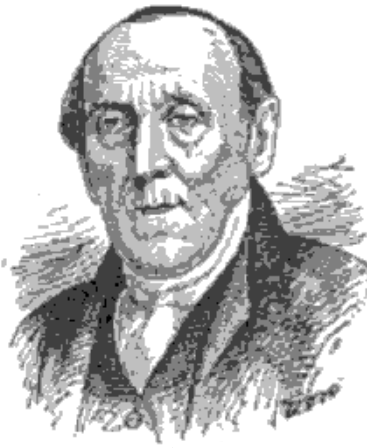- About MAA
- Membership
- MAA Publications
- Periodicals
- Blogs
- MAA Book Series
- MAA Press (an imprint of the AMS)
- MAA Notes
- MAA Reviews
- Mathematical Communication
- Information for Libraries
- Author Resources
- Advertise with MAA
- Meetings
- Competitions
- Programs
- Communities
- MAA Sections
- SIGMAA
- MAA Connect
- Students
- MAA Awards
- Awards Booklets
- Writing Awards
- Teaching Awards
- Service Awards
- Research Awards
- Lecture Awards
- Putnam Competition Individual and Team Winners
- D. E. Shaw Group AMC 8 Awards & Certificates
- Maryam Mirzakhani AMC 10 A Awards & Certificates
- Two Sigma AMC 10 B Awards & Certificates
- Jane Street AMC 12 A Awards & Certificates
- Akamai AMC 12 B Awards & Certificates
- High School Teachers
- News
You are here
Euler's Letters to a German Princess: Translation and Betrayal – Lists of Planets in Other Translations
I began to wonder how common the added heavenly bodies were among translators. According to Gustaf Eneström’s definitive early-twentieth-century list of Euler’s publications [Eneström 1910], there have been at least 34 editions published in 9 languages (French, Russian, German, Dutch, Swedish, Italian, Danish, and English, in chronological order of first translation). Via Interlibrary Loan and the magic of the internet, I have been able to track down 20 of these to make a comparison (see table below). After examining these, the sheer weight of evidence led me to change my mind about Hunter’s choices. Not only should Hunter be forgiven for cutting corners with his translation, he should be exonerated entirely. It turns out that Hunter’s original text (Euler 1795, E343G in Gustaf Eneström’s catalog of Euler's works) lists precisely those planets listed by Euler! (Particularly close readers who noticed Hunter’s death date of 1802 may not be as surprised to hear this.) However, the reprinting on my shelf (E343G4)—which happens to be the most widely distributed English version—does include the extra planets. So what happened? Hunter made some changes to a second edition (E343G2) that appeared in the year of his death, such as adding a glossary, but he left the list of planets at five (Mercury, Venus, Mars, Jupiter, Saturn). A third edition (E343G3) was edited by David Brewster (1781–1868) in Edinburgh in 1823; American John Griscom (1774–1852) added more footnotes and published a fourth edition (E343G4, the version I own) in New York in 1833. Since copies of Brewster’s 1823 version are relatively rare and none have been digitized, I have not been able to determine whether Brewster or Griscom were responsible for the extra planets.



Figure 5. Henry Hunter (left) did not add the extra planets; was the culprit David Brewster (center)
or John Griscom (right)? Wikimedia Commons (Hunter/Griscom) and National Galleries Scotland,
Creative Commons - CC by NC (Brewster).
Indeed, the decision about what to do with the list of planets seems to have been a vexing one for many translators and editors of the Lettres. The basic question: Given that Euler’s purpose was to give a list of all the planets, and that we now know about more than he did, should we put them in? Different translators have given different answers to this question over time. For instance, in 1798 a Spanish translator added a footnote describing the newly discovered planet "Herschell" (yet another early name for Uranus). In the 1847 German translation (E343B5), Uranus is inserted directly into the text, as if Euler had written it. A footnote alerts the reader to the fact that Uranus had not yet been discovered when Euler wrote, before proceeding to mention Vesta, Juno, Ceres, and Pallas (naming them as planets, also), and then to describe in considerable detail and with no small amount of patriotic pride the orbital dynamics of a fifth planet, "Astraea," located between Mars and Jupiter, which had just been discovered by the German astronomer Karl Ludwig Hencke (1793–1866). The French editions of 1812 and 1829 (E3435 and E3436) put Uranus and the four minor planets in a footnote, but the edition from the Belgian Oeuvres Completes (E3437), published ten years later, omits them completely. Things are, in short, a mess.
Nor is the list of planets the only thing to vary between editions and translations. Again looking only at Euler’s first letter, I found four different items that translators and editors seemed to feel free to change at will. In order of appearance in the letter:
- The direct address to the princess. This is simple and elegant, even in Euler’s original (he writes simply "Madame"). Some editions, however, find this unnecessary, and cut it altogether.
- The units of distance. Euler gave the distance from Berlin to Magdeburg as 18 miles. His units, however, are German miles—each roughly 4.5 English miles. This question to me is more interesting: When translating the language, should the translator also translate units into those more familiar to the reader?
- The list of planets. This is the issue described in detail above.
- The final sentence. The last sentence of Euler’s first letter is surprising. Once he finished his discussion of the size and immensity of the cosmos, he wrote "This immensity is the work of the Almighty, who governs the greatest bodies and the smallest, and who is now crowning with success the arms in which we are so deeply interested" [Euler 1795, p. 5. The latter part of the translation (in italics) was moved by Hunter to a footnote.]
This last clause, written during a successful period for Prussia in the Seven Years’ War, appears in italics in the Opera Omnia’s printing of the original text. It was ignored by most translators, and derided by others (in E343G and E343G2, Hunter pointed out that “philosophers, as well as other men, are under the dominion of local and temporary circumstances”). While I am still missing several editions of the Lettres known to Eneström, I managed to obtain the first letter in sixteen editions, and compiled a table showing how each handles the four issues above.
Table 1. A catalogue of the many variations of Euler's first letter from Lettres à une princesse d'Allemagne sur divers sujets de physique & de philosophie [E343]. Starred (*) entries indicate that a footnote explained the final clause of Euler's letter to be a reference to the Seven Years’ War.
| Edition | Year | Language | Address | Planet List | Berlin to Magdeburg Distance | Last clause |
| E343 | 1768 | French | Madame | Stops at Saturn | 18 miles | Present |
| E3432 | 1770 | French | Madame | Stops at Saturn | 18 miles | Present |
| E3434 | 1787 | French | Madame | Stops at Saturn | 18 miles | Missing |
| E3435 | 1812 | French | Madame | Footnote mentions Uranus, Vesta, Juno, Ceres, Pallas | 18 miles | Present |
| E3436 | 1829 | French | Madame | Footnote mentions Uranus, Vesta, Juno, Ceres, Pallas | 18 miles | Missing |
| E3437 | 1839 | French | Madame | Stops at Saturn | 18 miles | Missing |
| E3438 | 1842 | French | Madame | Footnote mentions Uranus, Vesta, Juno, Ceres, Pallas | 18 miles | Present |
| E3439 | 1843 | French | Madame | Footnote mentions Uranus, Vesta, Juno, Ceres, Pallas | 18 miles | Present* |
| E34312 | 1866 | French | Madame | Footnote mentions Uranus, Vesta, Juno, Ceres, Pallas | 18 miles | Present* |
| E343A | 1769 | Russian | none | Stops at Saturn | 18 miles | Present |
| E343B | 1769 | German | none | Stops at Saturn | 18 miles | Missing |
| E343B2 | 1773 | German | none | Stops at Saturn | 18 miles | Missing |
| E343B5 | 1847 | German | none | Footnote mentions Uranus, Vesta, Juno, Ceres, Pallas, and one other (Astrea), with many details about it | 18 miles | Missing |
| E343B6 | 1853/4 | German | none | List includes Uranus; footnote mentions Ceres, Pallas, Juno, Vesta; many details about discovery and orbit of "planet" Astrea are given | 18 miles | Missing |
| E343C | 1785 | Dutch | Mevrouwe | Stops at Saturn | 18 miles | Missing |
| E343E | 1787 | Italian | none | Stops at Saturn | 18 miles | Missing |
| E343G2 | 1802 | English | Madam | Stops at Saturn | 18 miles | In a footnote |
| E343G4 | 1833/4 | English | none | List includes "Ceres, Pallas, Juno, Vesta… and the Georgium Sidus" | 83 miles | Missing |
| E343G9 | 1858 | English | none | List includes "Ceres, Pallas, Juno, Vesta … and the Georgium Sidus" | 83 English miles | Missing |
| E343H | 1798 | Spanish | Señora | Footnote mentions "Herschell," and that it is also called Uranus | 18 miles (footnote also gives distance in Castilian feet) | Missing |
Dominic Klyve (Central Washington University), "Euler's Letters to a German Princess: Translation and Betrayal – Lists of Planets in Other Translations," Convergence (December 2020)




